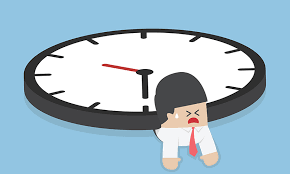 How many times do you walk by fire extinguishers without checking those tags or past first aid kits without peeking inside to assure the contents are complete?
How many times do you walk by fire extinguishers without checking those tags or past first aid kits without peeking inside to assure the contents are complete?
Most executives do not spot check these life saving tools. That task is delegated to maintenance. But these decisions are life and death, not simply profit or loss. Show your employees you care; that you lead their safety program rather than follow pro forma insurance checklists.
Start your spring cleaning here: walk through your operation and stop occasionally to check if you can easily spot the nearest fire extinguisher. Read the label. Is it appropriate for the work area?
Stand at each fire extinguisher station and visualize successful deployment. Is it easy and natural? Can you travel unharmed to the nearest fire exit using the fire extinguisher to clear a path?
Observe any long pathways between fire extinguishers and exits. Would another canister or different fire suppression device or system help?
Take some notes as you walk through the operation. Review these observations with the person tasked to keep the equipment updated.
Repeat the above exercise with regard to first aid kits. Are they easy to spot? Easy to access one-handed? Do they have instructions for calling emergency help?
These exercises do not require a great deal of time or scheduling. Simply make a point of checking these items every quarter, something of an internal surprise inspection.
Add ten minutes every three months to your walk-through routine. It doesn’t need scheduling or ceremony. Simply observe, become conscious of the emergency response routine. Are fire exits clogged with storage or debris? Are aisles kept unobstructed?
Is a specific person charged with de-icing fire escapes? As you walk through your operations, take notes of these questions. Think through an emergency evacuation, then review the written plan for your company. Does it make common sense? Does it raise questions for your risk manager or safety specialist?
Does your at-hire training include safety orientation and procedures? How about on-going communications on safety issues? Both directions?
Corporate officers lead the safety culture. Make these inspections in view of employees. They will engage you if they have proper concerns. They are a great resource.

 In 2004, a California carpenter fell 20 feet from a scaffold, suffering a head injury that resulted in brain injury — and led to a structured settlement of $8.9 million (the highest on record in the Golden State).
In 2004, a California carpenter fell 20 feet from a scaffold, suffering a head injury that resulted in brain injury — and led to a structured settlement of $8.9 million (the highest on record in the Golden State). When it comes time to work with an adjuster on a Workers Compensation claim, you can make life easier for everyone concerned by following these guidelines:
When it comes time to work with an adjuster on a Workers Compensation claim, you can make life easier for everyone concerned by following these guidelines: Seasonal employees add value to your company and remain an asset for your business. You may wonder, though, if you must provide these temporary employees with Worker’s Compensation. Understand the law and your responsibility to your employees as you maintain a safe workplace environment.
Seasonal employees add value to your company and remain an asset for your business. You may wonder, though, if you must provide these temporary employees with Worker’s Compensation. Understand the law and your responsibility to your employees as you maintain a safe workplace environment. Although the costs of work-related injuries sustained by employees are usually covered by Workers Compensation coverage, there is no coverage for hidden costs to the business the employee works for. Most plans cover medical expenses and lost wages of the injured employee. However, increased overtime expenditures, reduced efficiency and the expense of training replacements are not covered. These costs can greatly affect a smaller business.
Although the costs of work-related injuries sustained by employees are usually covered by Workers Compensation coverage, there is no coverage for hidden costs to the business the employee works for. Most plans cover medical expenses and lost wages of the injured employee. However, increased overtime expenditures, reduced efficiency and the expense of training replacements are not covered. These costs can greatly affect a smaller business. Holiday, seasonal or regular overtime allows your company to handle increased sales demands or cover employee absences. While you may enjoy the extra money, long work hours affect workplace safety. Know five common overtime dangers and their solutions as you remain safe at work
Holiday, seasonal or regular overtime allows your company to handle increased sales demands or cover employee absences. While you may enjoy the extra money, long work hours affect workplace safety. Know five common overtime dangers and their solutions as you remain safe at work Employees who work in construction, carpentry, manufacturing, auto repair, welding and maintenance are most likely to experience eye injuries. However, almost every work environment contains eye hazards, and the Centers for Disease Control and Prevention reports that 2,000 people suffer from workplace eye injuries every day. As many as 400 of those accidents causes vision loss. The correct eye protection can prevent up to 90 percent of these accidents.
Employees who work in construction, carpentry, manufacturing, auto repair, welding and maintenance are most likely to experience eye injuries. However, almost every work environment contains eye hazards, and the Centers for Disease Control and Prevention reports that 2,000 people suffer from workplace eye injuries every day. As many as 400 of those accidents causes vision loss. The correct eye protection can prevent up to 90 percent of these accidents. The nation’s more extreme weather patterns reinforces the need for businesses to reduce the risk of injuries or accidents to employees working out of doors under winter conditions.
The nation’s more extreme weather patterns reinforces the need for businesses to reduce the risk of injuries or accidents to employees working out of doors under winter conditions. Workers’ compensation insurance covers losses related to work-related injuries. When one of your employees is injured at work, you, the owner of the company, need workers’ compensation insurance to cover the employees’ medical expenses. The incident must be caused by an incident within the course and scope of the employees’ duties at work. Generally, as long as the injury occurs on the work premises, happens during work, and takes place while the employee is at work, the claim will be covered. Of course, there are numerous exceptions. Contact your workers’ compensation insurance adjuster for an extended explanation of which claims will be accepted and which will be denied.
Workers’ compensation insurance covers losses related to work-related injuries. When one of your employees is injured at work, you, the owner of the company, need workers’ compensation insurance to cover the employees’ medical expenses. The incident must be caused by an incident within the course and scope of the employees’ duties at work. Generally, as long as the injury occurs on the work premises, happens during work, and takes place while the employee is at work, the claim will be covered. Of course, there are numerous exceptions. Contact your workers’ compensation insurance adjuster for an extended explanation of which claims will be accepted and which will be denied. When you are injured or become ill on the job, you file a Workers’ Compensation claim. It covers your medical treatment and other expenses. However, you may not get the treatment or care you think you deserve. Consider when and how to get a second opinion.
When you are injured or become ill on the job, you file a Workers’ Compensation claim. It covers your medical treatment and other expenses. However, you may not get the treatment or care you think you deserve. Consider when and how to get a second opinion.



